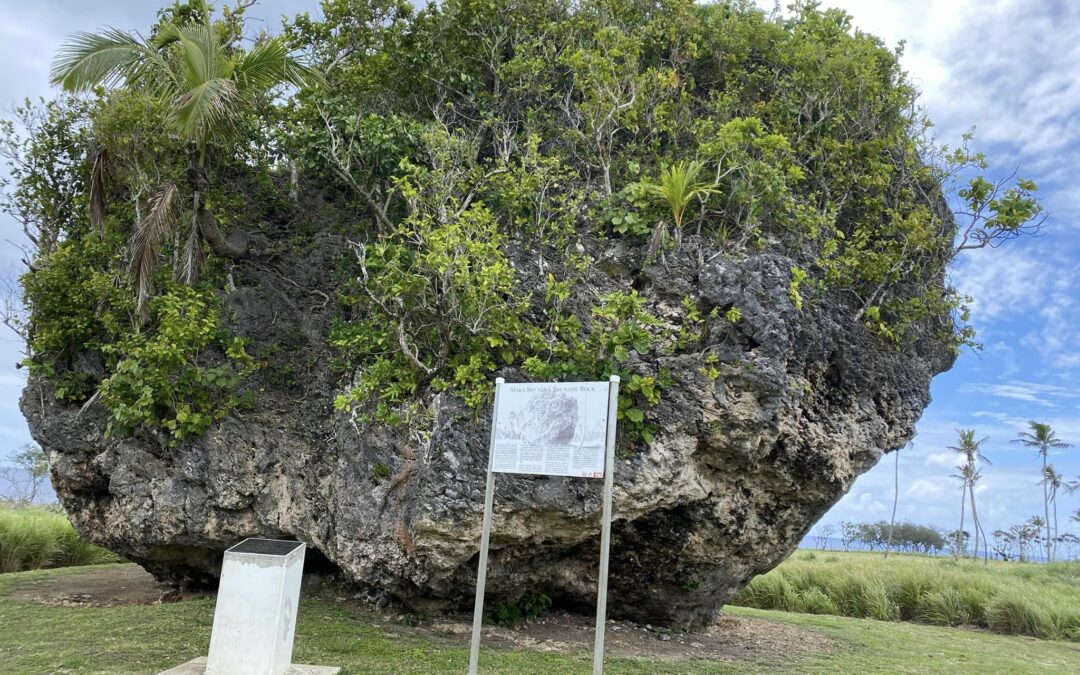The Tsunami Rock, also known as the Tōfā coral rock, is a large coral formation located on the northeastern coast of Tongatapu Island in Tonga. Here are some key facts about the Tsunami Rock:
- Location: The Tsunami Rock is located on the northeastern coast of Tongatapu Island, near the village of Tōfā. The rock can be accessed by car or by boat, and there is a small parking area nearby.
- Features: The Tsunami Rock is a large coral formation that was formed by centuries of natural erosion and weathering. The rock is approximately 30 meters long and 10 meters wide, and is situated in shallow waters close to the shore. The rock is made up of intricate, interlocking pieces of coral that have been shaped by the forces of wind, water, and time.
- Significance: The Tsunami Rock is known for its historical significance as a marker of past tsunamis that have affected Tonga. The rock is located near the site of a former village that was destroyed by a tsunami in 1917, and it is believed that the formation of the rock was caused by the force of that tsunami. The Tsunami Rock serves as a reminder of the destructive power of nature, and as a symbol of the resilience of the Tongan people in the face of natural disasters.
- Activities: Visitors to the Tsunami Rock can enjoy a variety of activities, including swimming, snorkeling, and exploring the surrounding coastline. The rock is surrounded by clear, turquoise waters that are home to a variety of marine life, including colorful fish and coral. Visitors can also take guided tours to learn about the history and cultural significance of the rock.
Overall, the Tsunami Rock is a unique and fascinating destination that offers visitors a chance to explore the natural beauty and rich history of Tonga. Whether you’re interested in the geological formations, the local culture and history, or simply enjoying the stunning coastal scenery, the Tsunami Rock is a must-visit destination in Tonga.

